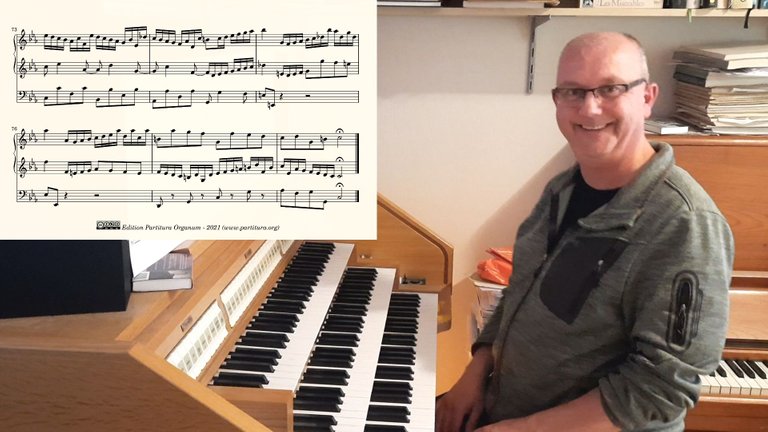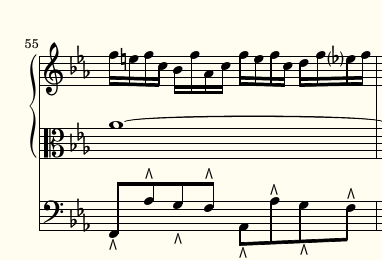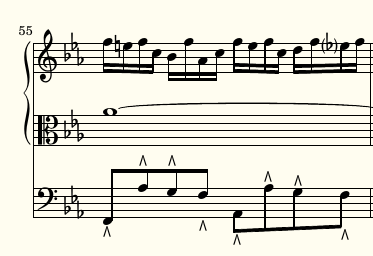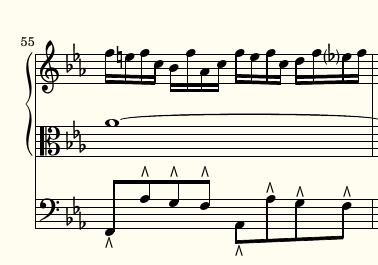Johann Sebastian Bach, Triosonate nr 2, cmoll, Vivace | Secrets of Organ Playing Contest, week 125
This is my entry for the Secrets of Organ Playing Contest, week 125. I play the first part of Bach's second Triosonate, BWV 526, in c minor.

Somewhere last year I set myself the goal of learning all 6 Triosonatas by Johann Sebastian Bach. Quite an ambitious goal as they are so difficult to play. So far I have managed the first and the fifth. And now it is time to take on the second. These three sonatas are already a bit beyond my reach and the remaining three are even more difficult. So it remains to be seen whether I actually succeed in learning all 6 of them.
The most tricky part in the first movement of this second sonata is the pedal part. In most bars the pedal part 'walks' in eigth notes. Playing these correctly takes a lot of my attention, leaving only a little bit for the two hands that have quite difficult parts as well. It is really slow learning.
Recently, @organduo, created a series of videos where he practises the first three Triosonates. The video where he works on the first part of the second sonata is this one. I took a good look at how he uses his feet in the spots where I did not know how I should play the pedal notes. Take for example bar 55. Even with the pedal playing rule for Baroque music 'use only the toe, not the heel', there are several ways this could be played (the ^ below the note means left foot and above the note means right foot)



The third option would be the most comfortable to play, even though it is against another pedal playing rule for Baroque music: 'use te feets alternately'. So I was pleased to see that @organduo uses the third possibility.
Bach indicates Vivace for this movement. Literally that means 'lively' and often it is taken as meaning 'fast' as well. Playing this movement fast is still a bit beyond me, but I can do lively!
The recording was done with the Hauptwerk software and the sampleset, made by Sonus Paradisi, of the Klapmeyer organ in the St. Nikolai church in Altenbruch (https://www.sonusparadisi.cz/en/organs/germany/klapmeyer-organ-altenbruch.html).
Congratulations @primalamusica! You have completed the following achievement on the Hive blockchain and have been rewarded with new badge(s) :
Your next target is to reach 1000 upvotes.
You can view your badges on your board and compare yourself to others in the Ranking
If you no longer want to receive notifications, reply to this comment with the word
STOPSupport the HiveBuzz project. Vote for our proposal!
Thanks. I practice at home!!!
Me too.! 🙂
How beautiful is this triosonata.
How are you @primalamusica ? Still holidays?
Thanks, @mipaino.
No holidays sadly. My day time job is a bit time consuming at the moment. I hardly practise the organ or spend any time on Hive.
Resteemed, your post will appear in the next curation post with a share for you!
Your post has been supported and upvoted from the Classical Music community (Subscribe at peakd) as it appears to be of interest to our community. We also support jazz and folk music posts!
If you enjoy our support of the #classical-music community, please consider a small upvote to help grow the support account!
You can find details about us below.
The classical music community at #classical-music, Peakd and Discord. Follow our community accounts @classical-music and @classical-radio or follow our curation trail (classical-radio) at Hive Vote!
Thanks for your entry! I'm so glad you recorded this movement. I think it's OK to use one foot pedaling in faster passages as alternate toes would be too clumsy, at least for my skill level.
It is certainly easier to play it this way for me as well. Alternate toe pedalling in these passages feels awkward and actually a bit painful as well with me knee injury. So, all the more reason to play it with one foot.